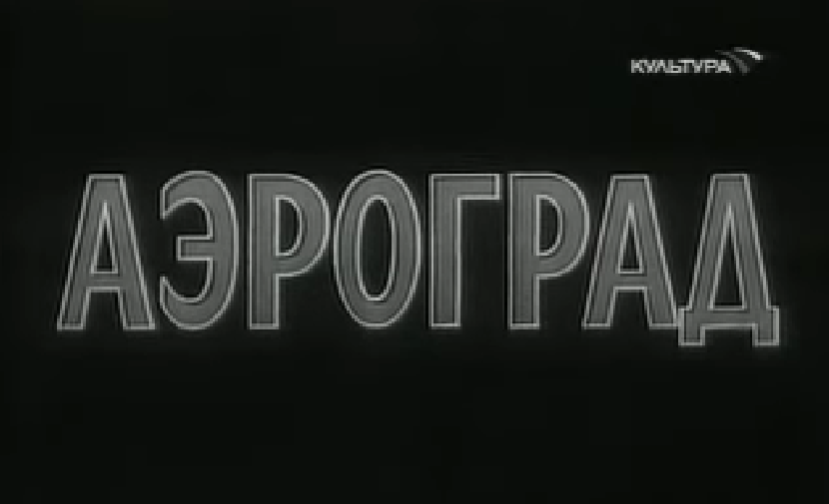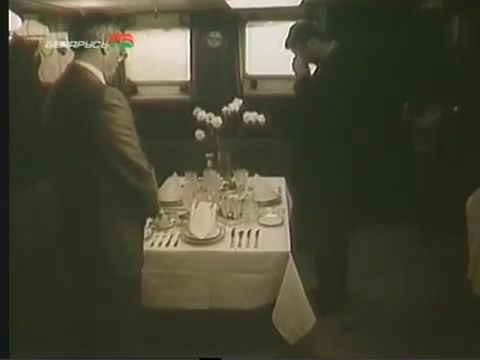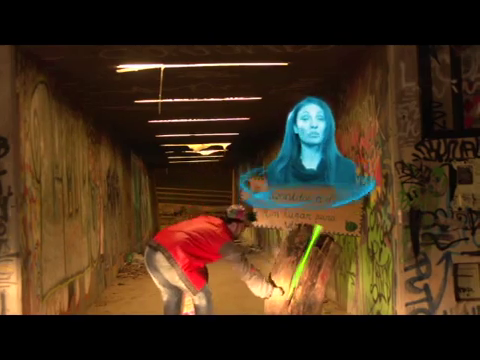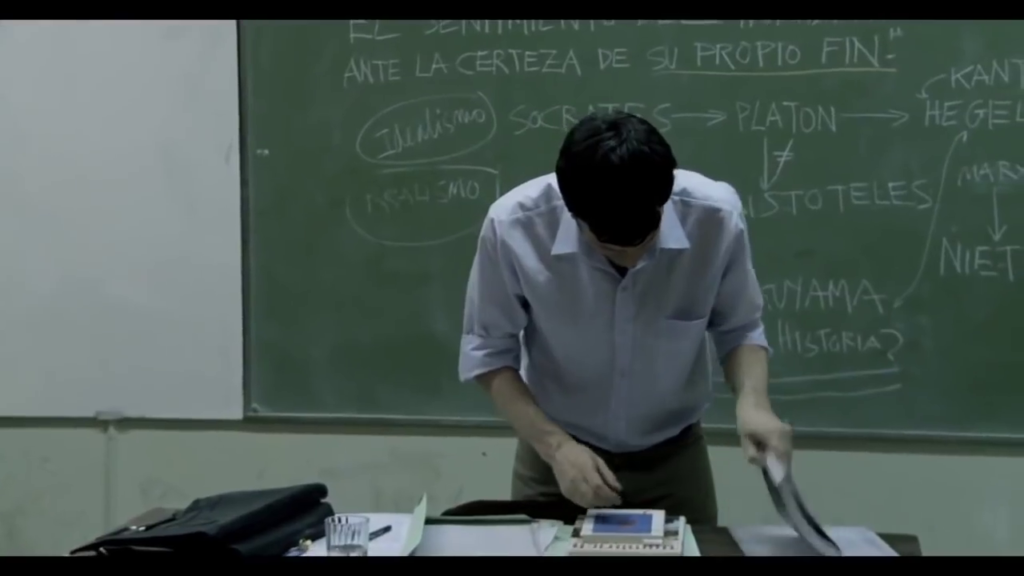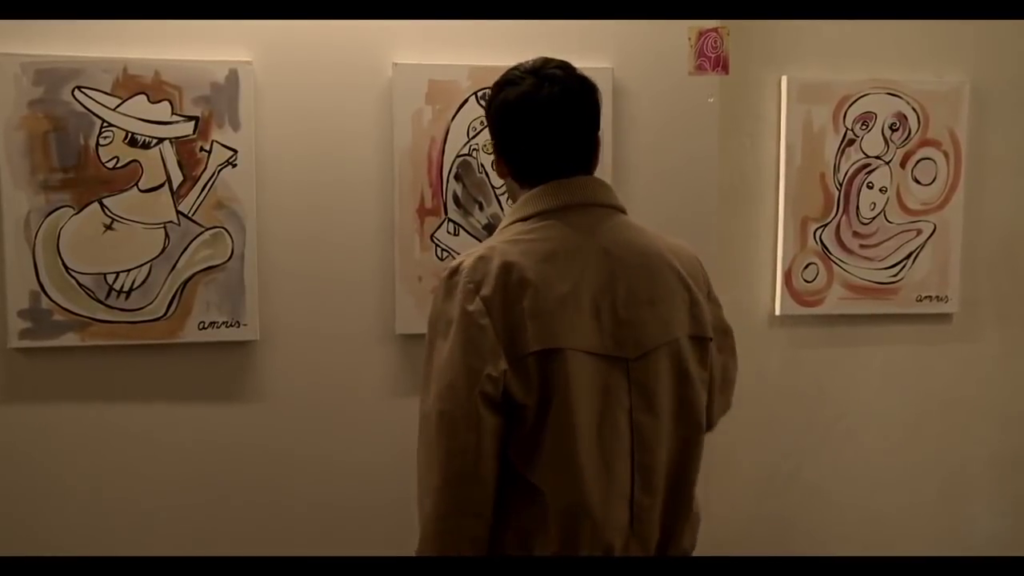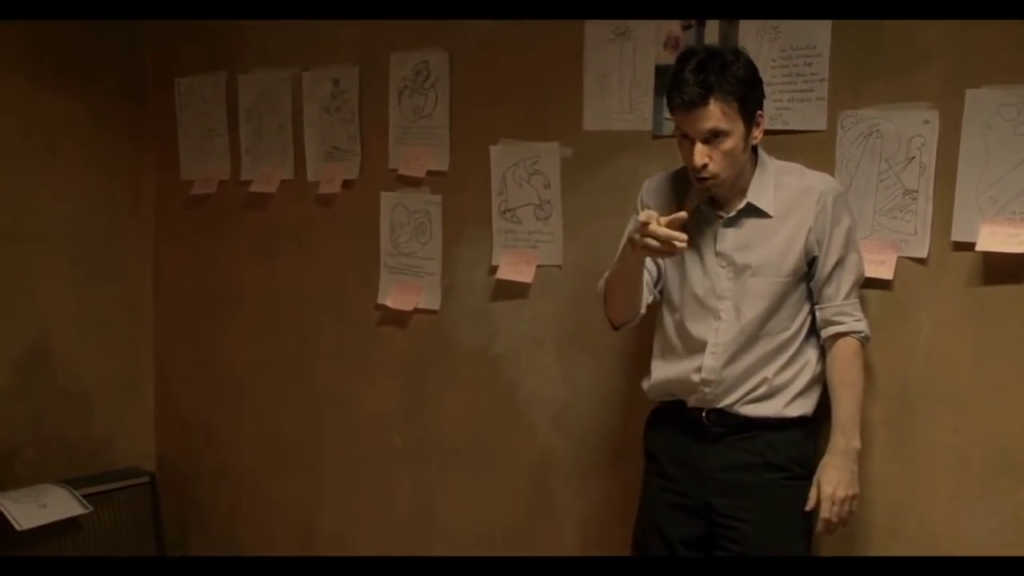-
#495 – Aerograd (1935)
Aerograd (1935)
Film review #495
Director: Aleksandr Dovzhenko
SYNOPSIS: In eastern Siberia, a remote village is under threat from Japanese invasion, as well as the Soviet army planning to build Aerograd, a city of the future in the area. Stepan Glushak, a resident of the village and renowned soldier, must embark on a mission to protect his village.
THOUGHTS/ANALYSIS: Aerograd (Also called Frontier) is a 1935 soviet film. The film centres around a remote village in Eastern Siberia, which is caught in between Japanese invaders, and the building of a new modern town called Aerograd under construction by the soviet army. Stepan Glushak, who was born in the village, returns to tell them of the new town, but is met with resistance by the superstitious locals, who fear change. The plot of the film is pretty threadbare: as with most soviet films from the time, this is nearly all just propaganda. There are numerous, extended speeches glorifying the red army, and songs singing its praises to the footage of fleet of soviet aircraft. Stepan tries to convince the residents of the village not to fear the soviet union, but they are sceptical, God-fearing people who fear change. It’s a simple premise, but one you can easily understand, and offers a solid base to sing the praises of the red army as they take out the invading Japanese forces.
The characters are fairly one-dimensional and uninspiring: Stepan embodies the soviet cause, and is the stoic, burly and heroic male lead. The residents of the village by contrast are portrayed as superstitious, irrational and old-fashioned in their fear of the red army. The Japanese, likewise, are overly-emotional and overacting to make them seen as different as possible. The Japanese soldiers are referred to as “Samurai,” even though they don’t have the traditional samurai armour or attire. I wonder if that’s a misconception that all Japanese soldiers are samurai that was held back then, but I can’t be sure. Either way, the purpose of the film definitely is not to accurately represent Japanese culture.
The cinematography of the film is perhaps it’s strongest point. There’s lots of expansive shots of the Siberian wilderness: a place that very few people would have seen on film or in person at that time. The cuts between cameras within scenes is also smooth and well done, particularly considering the scenes shot outdoors, and done when most scenes only consisted of a single camera. The footage also of fleet of airplanes, including being film from the planes themselves, is also quite well done. It’s difficult with these sorts of films to get to any kind of message the film has underneath all of it’s state-mandatory propaganda, and Aerograd is no exception. There’s some opinion that there’s some anti-Soviet sentiments that are hidden underneath the surface, but again, it is very difficult to make out. You could argue that the whole situation of Stepan abandoning his village for the glory of the Soviet Union paints him as a villain, and that certain moments of hesitancy regarding him killing his childhood friend open up a space within which things can be questioned by the viewer, but it is all very slight, and nothing concrete (but that would be by design, as any more obvious anti-Soviet sentiment would not have made it to film). It’s perhaps pretty easy to dismiss any Soviet Cinema as being simply propaganda, but there’s still plenty of decent films from the era that have a decent story etc., but I don’t think Aerograd is one of them.
-
#494 – The Apostate (1987)
The Apostate (1987)
Film review #494
Director: Valeri Rubinchik
SYNOPSIS: Miller, a physics professor, manages to create a device that can clone human beings. When the government learn of it, they want Miller to turn over the machine for their own uses. Miller also gets caught up in a conflict with his own clone, as the two lead similar, yet different lives, and come to different conclusions about what to do with their similar, yet different lives…
THOUGHTS/ANALYSIS: The Apostate is a 1987 science-fiction film based on the novel Five Presidents by Pavel Bagryak. The film opens up with Professor Miller, a physics professor at a university, visiting the President of a certain country: Miller has invented a method of cloning humans, and the government wants him to turn it over to them so they can use it for probably military purposes and such. The film revolves around Miller, as people try and get to him and his secrets, and also his clones, who lead the same, but different lives. The aim of the film is to explore the implications of cloning technology, and all the ethical conundrums that emerge from it. It’s all mostly stuff you’d expect to be explored, but it does it with a fair amount of depth and explanation. The structure of the film is a bit odd: almost self-contained scenes are separated by long interludes of imagery and music. As such, the flow of the story is rather disjointed and doesn’t really tie into a flowing narrative, which is odd seeing as it is based on a novel. The different scenes thus serve as dialogues about the various implications of cloning and the possibilities that come with it. As such, it becomes quite easy to get lost with regards to what is happening.
The aspect of the film which holds it together more than any other is the interactions between Miller and his clone: they both have the same memories, but their lives begin to diverge as they get involved with different people and such. Miller and his clone(s) are portrayed by the same actor, so the scenes involving them are carefully shot so that only one of them is completely visible at any one time. The fact that the two diverge in appearance (hair styles, glasses etc.) as the film goes on is also a nice touch that emphasises that divergence in their lives, and that while they may be identical, they are also now different. The rest of the cast doesn’t really stand out in any significant way, but I guess they don’t really need to. All of Miller’s clones moving about and some of them getting killed really does make the film even more confusing, but again the overarching plot doesn’t really seem to be the focus of the film.
With a runtime of nearly two and a half hours, the film takes it’s time in exploring it’s subject matter. The interluding scenes that bridge the dialogue scenes focus on vast landscape views, and often violent weather and associated destruction accompanied to classical music; which stirs up the feeling of nature responding to the cloning being itself a rebelling of nature, which is cool, but I’m not sure that’s the aim, and if it is it could have been done much more explicitly to good effect. As mentioned, the scenes where Miller and his clone are present are carefully shot so that the same actor can play both parts, and this is pretty well pulled off, and doesn’t feel forced. The rest of the cinematography too is pretty solid, from scenes that pan across large settings, to transitions between different parts of buildings, the camera work is fluid and competent. Overall, I don’t think The Apostate offers anything new to the discussion and implications of cloning, but it approaches the subject with clarity, while also plunging it’s depths too. The disjointed story does not lend itself to the traditional cinematic structure, and it’s very easy to get lost in the film’s wanderings. It’s probably not got anything unique enough to be worth a watch, unless you’re big into soviet cinema, and how it might take on the idea of cloning.
-
#493 – Back to the Siam (2013)
Back to the Siam (2013)
Film review #493
Director: Gonzalo Rodan
SYNOPSIS: Marty visits his friend Doc Brown and finds that he has invented a time machine…made from a fridge. A bunch of men in suits appear and try to catch Marty and the Doc, leading to Marty accidentally being transported back in time to the year 1986. There, he has to find Doc Brown again to help him fix the time machine to get back home…
THOUGHTS/ANALYSIS: Back to the Siam is a 2013 science-fiction film, based on…well, you can probably guess. The film centres around Marty Fox, who visits his pal Doc Brown to find he has completed work on a time machine that he has constructed himself out of a fridge. However, some men in suits come to put a stop to the Doc’s experiments, and Marty is accidentally sent back in time to 1986, damaging the time machine in the process. Marty goes to the Doc Brown in 1986 to get help in fixing the time machine and sending him home. The film is essentially made as an Argentinian Back to the Future, so while the essential plot is more or less the same, a lot of the settings, people, and scenarios are replaced by things which are more common to Argentina. For example, instead of the lightning storm which takes Marty back to the future in BttF, here it is the electricity generated when footballer Maradona scores a goal at the 1986 world cup. This is obviously a low-budget, somewhat satire of the films, so you can’t penalise it for accuracy, but the changes it has made to the film mostly fit the story well, and give the story a bit of a twist. Obviously it is based on the foundations of an already well written film in BttF, so I don’t want to give Back to the Siam too much credit for that. I could not find any English subtitles for this film, but I don’t think it really matters if you know Back to the Future like nearly everyone does, but does mean I can’t really comment on the jokes or humour. The physical humour is mostly entertaining though.
The biggest change from Back to the Future is that the “past” in this film is 1986, which is about the same time that the “present” was in BttF (1985, to be exact). This could have been a pretty interesting thing for the film to play with, but as mentioned, it’s aim is to make an Argentinian take on the original, rather than try anything too new. The main characters too are basically the same, just tweaked to reflect their locale. The character of Biff Tannen doesn’t have a counterpart in this film though, and instead the antagonists are just men in suits. The main focus of the story is the first Back to the Future film, but there’s some nods to the second and third film, so it definitely feels like a take on the franchise as a whole, which is nice, and means that the film won’t set up a sequel it will never get.
This should not come as a surprise, but this film is completely unlicensed, and has no permission to use any of the names, characters, or anything. It reminds me of the films of the 60s and 70s that would simply make films based on entire franchises without permission, typically in countries where they would not be found out and sued into oblivion. Back to the Siam doesn’t use any Back to the Future footage, but it does use a lot of the music, which it definitely doesn’t have the licence for: if you were going to argue this was simply a fan-made parody, then that might be the thing that tips it over the edge into plagiarism territory. Despite being a low budget “parody,” there’s obviously a lot of thought and effort gone into certain aspects of the film: the fridge being the time machine instead of the DeLorean (obviously there would have been no way to afford one) genuinely works and looks cool, as well as providing some fun gags. The camera work is also surprisingly good, and shows competency when switching between different angles in scenes. The biggest production issue is the audio: it constantly peaks and distorts, and voices in the same scene can often have completely different volume levels. Even doing something basic like having a limiter would have helped immensely; it’s quite odd that there’s such a disparity between the camera and audio work.
Overall, Back to the Siam is what you would expect from a low-budget parody/re-make/bootleg…whatever you want to describe it as. It uses the successful formula and story of what it is based on, and adds it’s own flair. While keeping fairly close to that original, it also sometimes decides to just go ahead and do what it wants. At one point it decides to just through in a version of “A whole new world” from Disney’s Aladdin for no reason. I appreciate the randomness though, and also the effort taken to give the source material a different flair. It’s not going to offer you anything that Back to the Future doesn’t, and a lot of the Argentinian cultural references may not offer anything if you’re not familiar with them, but it definitely could have been a lot worse.
-
#492 – 5.5.5. (2013)
5.5.5. (2013)
Film review #492
Director: Gustavo Giannini
SYNOPSIS: Gabriel is a philosophy teacher at a night school. A woman named Amnis enrols in his class, who vanishes without a trace after their intimate encounter. Her interest in the artist Benjamin Solari Parravicini, and his art that apparently predicted the future, leads Gabriel to research the artist’s works and unravel just what Parravicini saw in humanity’s future…
THOUGHTS/ANALYSIS: 5.5.5. (also known as Prophecy) is a 2013 film from Argentina. In the opening we are introduced to Gabriel, a philosophy teacher who is running a night course at a local school. A new student named Amnis introduces herself, and talks to Gabriel about the art work of Benjamin Solari Parravicini, whose art is printed on her shirt, and apparently predicted the future in his works. After an intimate encounter with her, she vanishes without a trace. Gabriel starts trying to locate her and researching Parravicini’s work, and learns that Parravicini’s predictions have come true, such as predicting the 9/11 terrorist attacks amongst others. He, aided by his cousin Tony, seek to unravel Parravicini’s prophecies and the apparent coming of an apocalyptic event which will strike the Earth in the near-future. The story of the film revolves around piecing together Parravicini’s visions and Gabriel’s developing obsession with them. The premise is pretty interesting, and the mystery surrounding Amnis’ identity and whereabouts is something which will keep viewers intrigued about until the end. There’s a couple of other smaller threads concerning Gabriel’s ex-wife and child, Tony’s schemes and some shady people trying to stop Gabriel unravelling Parravicini’s secrets, but they only really serve to build up different sides of Gabriel’s character. The trouble with the story is it never really gets too interesting: it’s basically Gabriel just doing research. The build-up to an apocalyptic event in the near-future that Parravicini prophesised and Gabriel trying to work out when is a bit more interesting. But ultimately goes nowhere. The film obviously hinges on leaving certain questions open regarding the prophecies and whatnot, but there’s not enough concrete results or a pay-off that is needed to provide a foundation to consider the ambiguity, and it ultimately feels like it leads nowhere. Some of the more interesting aspects like the neighbourhood that apparently distorts sense of time, are one such example that is left open, but is something that would make the story more interesting if it was revealed how it figured into the story.
Perhaps one of the weakest links in the film is the character of Gabriel himself: he just isn’t an interesting lead. It is difficult to empathise with him because he rarely shows his reactions to what is happening. Whether this is down to the acting, or he is intentionally written like that I don’t know. The parts of his character like being a philosophy professor, or being a parent, only figure into the film when absolutely necessary, and otherwise don’t affect his actions. Amnis is an interesting character, and the mystery surrounding her is a good thread that flows through the film, but the reveal only raises more questions: if she was from the future, how did she time travel? Was she a prophecy that Gabriel could see? Just explaining the mechanics of things a little would not ruin the ambiguity I think. The rest of the characters, as mentioned, don’t really come into their own, and only serve to bounce off of Gabriel’s character. Tony as the vaguely “comic relief” character fulfils a very obvious role that doesn’t really fit the serious tone of the film.
The film eventually reaches a point where it turns out that a shadowy organisation has been hoarding Parravicini’s artwork and preventing his prophecies from being found out. A man starts following Gabriel and the stakes get raised, but in the end it just goes nowhere. The ending of the film is also like that, as Gabriel just admits he has lost it and needs help, just before he is seemingly killed by the mysterious man. I am left wondering what the point of it all was: there’s no real conclusion to anything, and the prophetic vision or whatever it is that ends the film comes out of nowhere, and seems like a bland attempt at trying to create an ambiguous ending in a film that is already full of holes. 5.5.5. has some good moments in it’s intriguing and somewhat interesting story, but falters with it’s cast and characters. It’s attempt to create meaning often leaves the story full of gaps, and the unconvincing responses from characters will leave viewers without direction with regards to what to feel. Not a film entirely without merit and perfectly watchable, but you might not get anything out of the experience.
